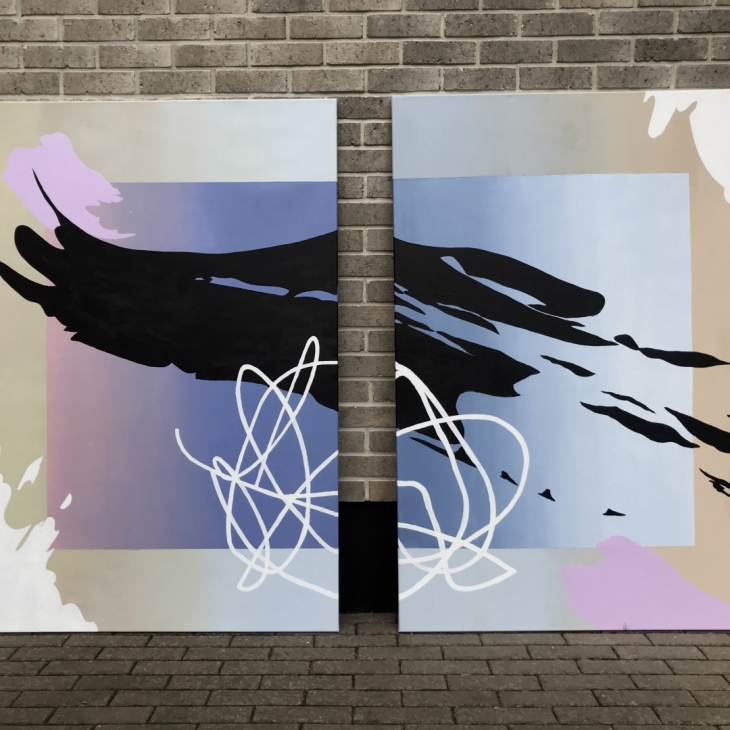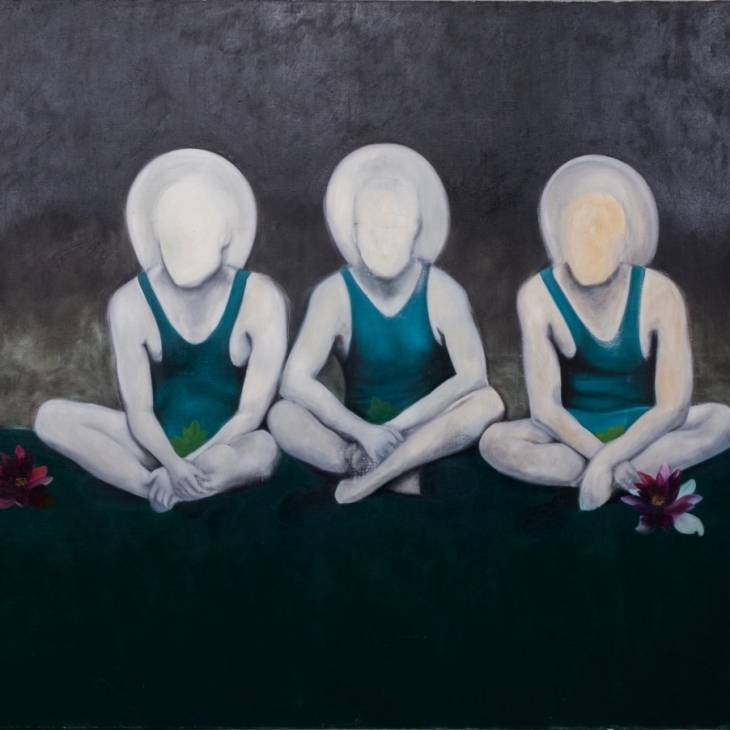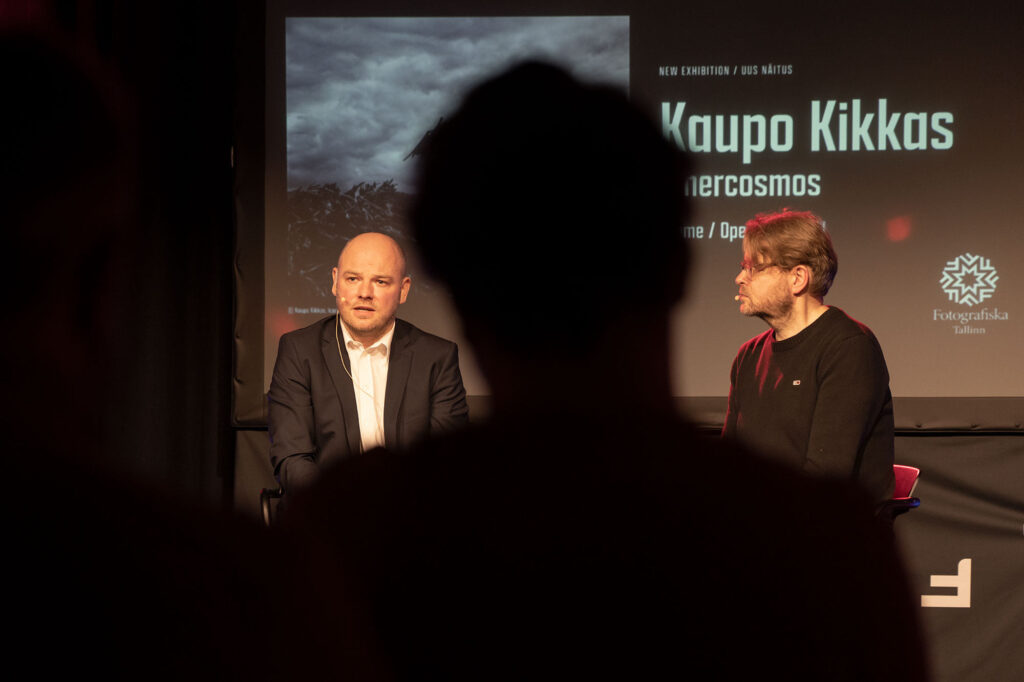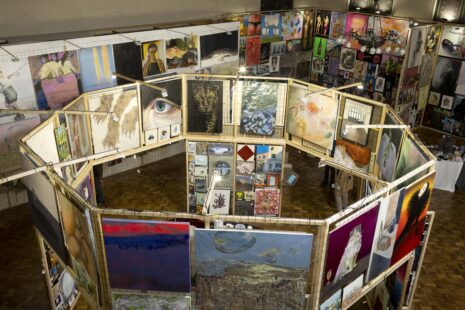When did you start with photography?
I remember very clearly the moment I started to take pictures. When I was young, I went to music high school – I played the clarinet, sang in the boys’ choir and was very active. In addition, I had a strong will to work a bit and earn pocket money; I wanted to integrate into the “real world” very early on.
Through a singer from a boys’ choir, I got the opportunity to work for a small Estonian company called Mikrolink, where I wrote short stories for the company’s intranet site. It allowed me to use one of Estonia’s first digital cameras to illustrate the articles. It was a black box with a 0.3 Mpx camera with no screen, but let’s not forget, it was the time when my classmates didn’t even have email addresses.
This digital camera was an absolute magic machine for me, it captivated me entirely c, and I haven’t had a dull day since.
I bought a camera with the first film a little while later.
By the end of high school, my interest in photography was already deep, but my love for music was strong. The setback arrived at the music academy. I made a difficult choice and switched from a clarinet to a camera.
I have never regretted my decision. If I had chosen another way, the hole in my soul would be in a different place. You can enjoy music, but it is impossible to find an experience equivalent to making music in this world.
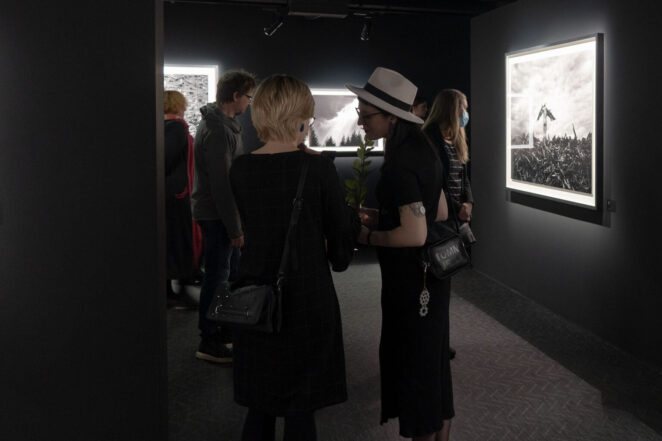
“Inner Space” Photo: Argo Argel
Music has always been part of your work – you are known for shooting portraits of classical musicians.
Yes, music has remained very important to me, and there are many facets here. Perhaps the first is taking photographs of musicians. Working with musicians is very natural for me as most of my friends are musicians, and when we meet, our talks are about music rather than the visual arts.
I have more to say about music than the visual arts.
I find this a good thing. One of the greatest dangers in visual arts is copying – sometimes it’s done consciously, sometimes subconsciously. If you draw inspiration from music and literature, your creation goes through a specific translation mechanism, so you don’t re-create someone else’s work.
Musical inspiration is essential to me. In English, there is a phrase: “Once musician, forever musician” – if you’re in the music and there are musicians around you, it will be a part of you. But the fact that music turned into my job is very special to me. It took almost a decade for me to take photos of events and do commercial projects until the first clients, foreign musicians, emerged, leading to a career. Portraying classical musicians is a niche field, and very few photographers do it in the world.
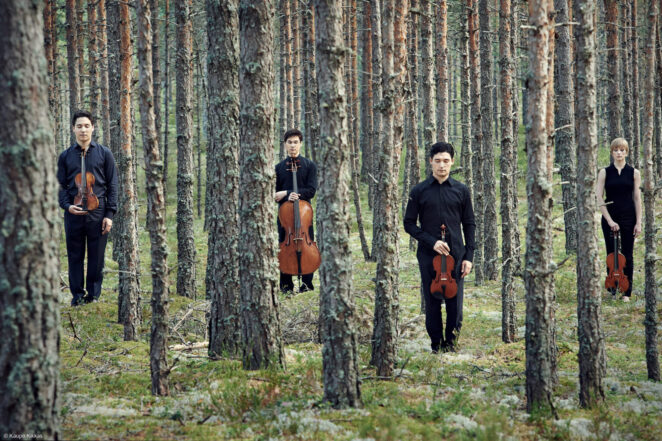
Kaupo Kikkas. Schumann Quartet
How is taking portraits different from capturing expansive nature landscapes?
In one case, I’m working with a model and a distinct look as the photo has a definite purpose. I cannot say that I am 100% free in that kind of work; there are always limits. If a client pays for the job, I must consider the purpose and idea.
In the case of free creation, however, I am independent and in a hazardous environment. You do not know what it is, what you are doing, what it will be and whether it is worth anything. But you study and try and experiment. After taking the picture, I look and test myself if what is being done makes me feel something. And very often, it takes years of observation and philosophising, and I am not joking here, to find the answer within yourself, whether one or the other project is suitable somewhere, and if so, whether it is ready or needs to be worked on. Perhaps this is the most challenging question with free creation.
A single painting can be seen as a whole, but this is rarely the case with photos. In the case of photography, it is usually necessary to create a series, and putting this set together is a complicated and lengthy process.
If an artist can make his artwork from scratch in other visual art forms, then photos are always based on the existing material – I think this is the most challenging aspect of photography.
You can compare shooting photos of musicians to illustrations. Illustrations can be independent works of art, but often it depends on the story. However, there is no such dependence in the case of free creation.
Your exhibition “Inner Cosmos” will be open in Tallinn until mid-May. Tell us a bit about this exhibition. How long does it take to prepare such eloquent exhibitions?
“Inner Space” is the largest exhibition project in the last four years, preceded by “Ansel”, “A Hundred Stories”, and “Treescape”.
You can view the preparation of the exhibition and the time it takes from two perspectives. The first is a pragmatic view. When compiling a new show, you are working with the unknown, which does not give you any vital guarantee – that is, you also have to do alternative work and projects. It means working with musicians and teaching, which is almost a full-time job in terms of time. Sometimes, ironically, I say that Estonian artists are like hobby artists. Almost everyone needs to do work additionally to earn a living. But maybe there is even a balance here – life doesn’t have to be too beautiful, and you don’t have to be fully committed to your art. Although I think all artists would like it to be so.
So this is why preparation for an exhibition sometimes takes months and even years – it is impossible to get all the financial and time resources faster.
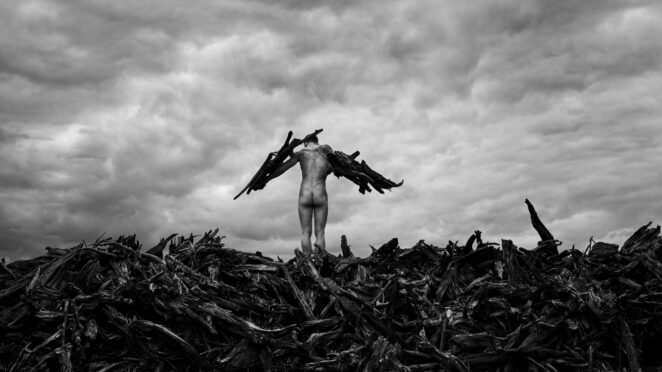
Kaupo Kikkas. Hero
But the other half of this long process is more beautiful – a reward for the efforts that you have made for tears. During a long preparation, the essence and the idea that you have “boiled in the pot” for years will get stronger – if you put something additional in, you are also throwing something that is not good enough out. And the secret mixture gets better and better. Yes, projects can be quickly “thrown together”, but in most cases, the magnificence and power of art will be increased in time.
There is a bit of magic, metaphysics, dark realism, a feeling of sorrow about the environmental destruction in “Inner Space”, and myths, stories and legends that I mix and distil together. I liked the comment by writer Jan Kaus – he looked at every photo in the exhibition as a short story and the whole show as a collection of short stories or a novel.
For me, the experience of “Inner Space” was amplified by a compelling sound.
The exhibition is an option to tell a story, and I am ready to do anything to awaken the viewer’s receptors to dreaming, contemplation and discovery.
I am a fan of the Wagnerian Gesammtkunstwerk – the more we can engage the viewer’s senses, the more abundantly we can put together an exhibition, and the more people we will manage to attract. The last two shows – “Ansel” at the Arvo Pärt Center and “Inner Cosmos” have been very successful, and high-quality sound has played a significant role in it,. In the case of “Ansel” it was Arvo Pärt’s “My Heart is in the Higlands” and at the recent exhibition Sven Sosnitski’s special work “Inner Space”.
The presentation of artworks, lighting and sound – all these aspects serve one goal.
This is one of the reasons why making a high-quality photo exhibition is so damn expensive and why buying high-quality photography is expensive. It is often thought that a painter puts a lot of effort into his painting and the photographer just a snap. However, considering the amount of work and costs involved in preparing an exhibition, I wouldn’t be surprised if the money and budget are more considerable for photo displays than traditional exhibitions presenting paintings.
The relationship between man and the environment and loneliness have been cross-cutting themes in many of your projects. How do you think we should change our attitude towards nature in our daily behaviour?
Everyone with a heart and mind in the right place considered the environment, but unfortunately, we also all destroy that. I also take my car to work and go on a plane to travel abroad, but at the same time, we are all looking for balance and trying to be as reasonable as possible. I believe that the guilt that is being imposed on us could lead to mental health problems.
I try to do better for the environment every day, but I could certainly do much more. But on the other hand, creating art is by nature, a selfish and destructive activity. God knows how much CO2 has been emitted and material wasted when preparing an art show.
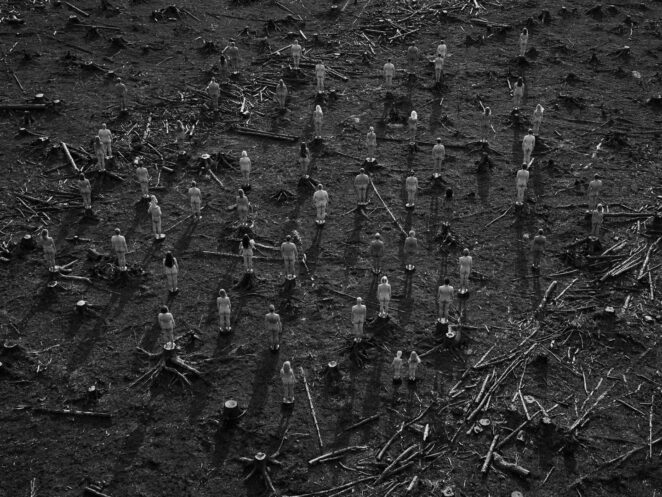
Kaupo Kikkas. Human Forest, 2018
Loneliness is a subject that is difficult to put into words, and it can be good – it is convincing that fine art and music are needed because it speaks at a different wavelength than the word.
I believe we all have our inner world in addition to the public side. Coming back to the exhibition, I think that “Inner Space” is experienced with an inner side, which the viewer may never share with anyone.
For many artists, routine plays a significant role – the habit of painting, drawing, and working daily. What are your creative routines? Or are you free of them?
I am kept in a routine by daily work, i.e. portraying musicians, preparing, planning, editing photos, communicating, planning lectures and keeping the studio alive.
When I am actively working on a project, I create a dual routine. One of the two is about reading and developing ideas. The insight sometimes comes as a gift at night – just like that, and you have a vision ready – but sometimes you have to work with some thoughts for years.
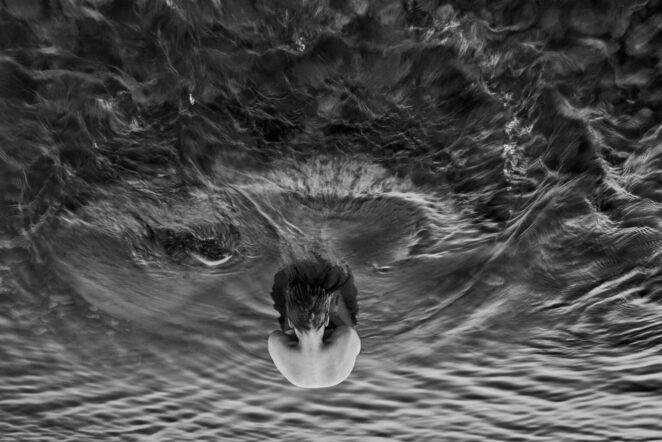
Kaupo Kikkas. Medusa, 2020
A plane is an exciting place for me. It has been proven that human emotions are amplified in an aircraft. In one experiment, people were shown the same film both in the air and on the ground. Those watching the movie on the plane were 15% more likely to have tears. When flying, I always try to keep a piece of paper or phone in hand to capture my thoughts.
The other part of the routine is related to implementing the ideas. When preparing “Inner Space”, there was a lot of work with models – finding and negotiating with them, synchronising locations and transport. It is not so much an artistic activity, more like the work of a project manager or producer. I believe that artists do not want to deal with such things in an ideal world, but in real life, they have to.
I need to find time to spend in nature and work in nature; that is my core as an artist.
As an artist, do you feel responsible for talking about socially important topics through your work?
The first dimension of art is that art has to speak to its audience. If art does not do it, it is not art. We can look at different definitions and emphasise the importance of technical skills and mastership, but the audience is part of art, and it is essential for the creation to speak with someone.
But on what topic and how to address people? Since World War II, attempts have been made to improve the world through horrors, trauma, pain and bullying. I do not share that faith. According to my credo, art should lift a person higher, not make him feel small or push him down the stairs.
I always try to think if my ideas and thoughts are “getting through” – reaching the audience is crucial for me.
I see a lot of artworks that make me wonder if the author has succeeded in delivering his good idea. Usually, long curated texts are added to explain what the artist meant. Art becomes meaningless at this point. Why put this work between a curator’s text and a person at all?
In response, human responsibility is more important than political or environmental responsibility. If you’re not ready to speak up to protect the weak and you do not care about the environment, you are a bastard. There has been a polarization – artists have gone to extremes towards Marxism and ultra feminism. I don’t like extremes, and as a person, I always want to speak for a better place in the world, but I don’t think that all creation has to be responsible.
How do you recharge your batteries?
Nature is alpha and omega for me. In recent difficult years, the role of nature has become increasingly important. I read a lot, and try to listen to music, and the last few years have kept me entirely away from crowds and larger events. And I’m sorry about that because I feel it’s hard to integrate back there now. This is the case even with concerts – I know that there are many people I know on the stage and in the hall, but I rather listen to the shows via radio because I can’t force myself to go among the people. But I still try to improve myself and go again. Going to social gatherings is even more complicated, although it hasn’t always been the case. It has changed over time, regardless of the surroundings, but on the other hand, last years have left their mark.

Self-portrait “One year of insanity”, 2021
Whose work to keep an eye on Estonian artists?
Many artists among us have a so-to-say day job but are much greater than the artists receiving the awards and attention. I am happy to keep an eye on alternative scenes. But the alternative doesn’t have to be terribly avant-garde.
It is often thought that alternative art does not fit in the “box” because it is so innovative or different. However, it does not fit into the “box” because those in the “box” make sure that no one else makes it in. I encourage everyone to think twice before saying what is high-quality art, what is suitable or what is not. I recommend looking for an alternative direction – it is no way less valuable.
Do you think Estonians appreciate photography? Which of your works do you value the most?
In terms of sales potential, photography has a vast space for development. For example, if we look at art auctions, we practically do not see photography there, and Estonian art collectors are pretty old-fashioned. However, the baying photo art could be considered, as there are so many exciting dimensions in buying and collecting works by living photographers alongside the acquisition of works by well-known and long-dead artists. First of all, you can be a part of the creation and influence the life of an artist. You can learn more about these works and hear stories about their completion.
On the other hand, it photo art allows tailor-made solutions. Some collectors expect painters to paint a piece in a specific size so it would be perfect over the living room sofa. However, it is possible to present a photo in various ways and different sizes. It can be a small eye-catching work or a photo with a diameter of several meters.
Photos as a medium are so rich that I hope that Estonia will get closer to the Western world, where photography has conquered auction houses.
As for the closeness of my artworks, I can say that the more time and effort I put into the work, the more meaningful they become. I hope that the prepared exhibitions will be on display for many years to come – the energy and input spent have been significant, and it would be sad to see if these will simply stay in the boxes.
What are the following projects-exhibitions that the audience should look forward to?
The next big project will come out on February 23, 2023, when a silent film with Erki Pärnaoja’s great symphonic work will be performed at Alexela Concert Hall. In other words, I work with a moving image, which is like reviving photos and where the narrative is created through independent art chapters.
I sometimes do other artworks. As a reflection of the war, I created “Collision of the Systems II” and repainted it with blood. I do not think that an artist must be loyal to a particular style, method, or art field, but he must treat his medium with great respect and love.

Making of “Collision of the Systems II”. Photo: kaupokikkas.com

